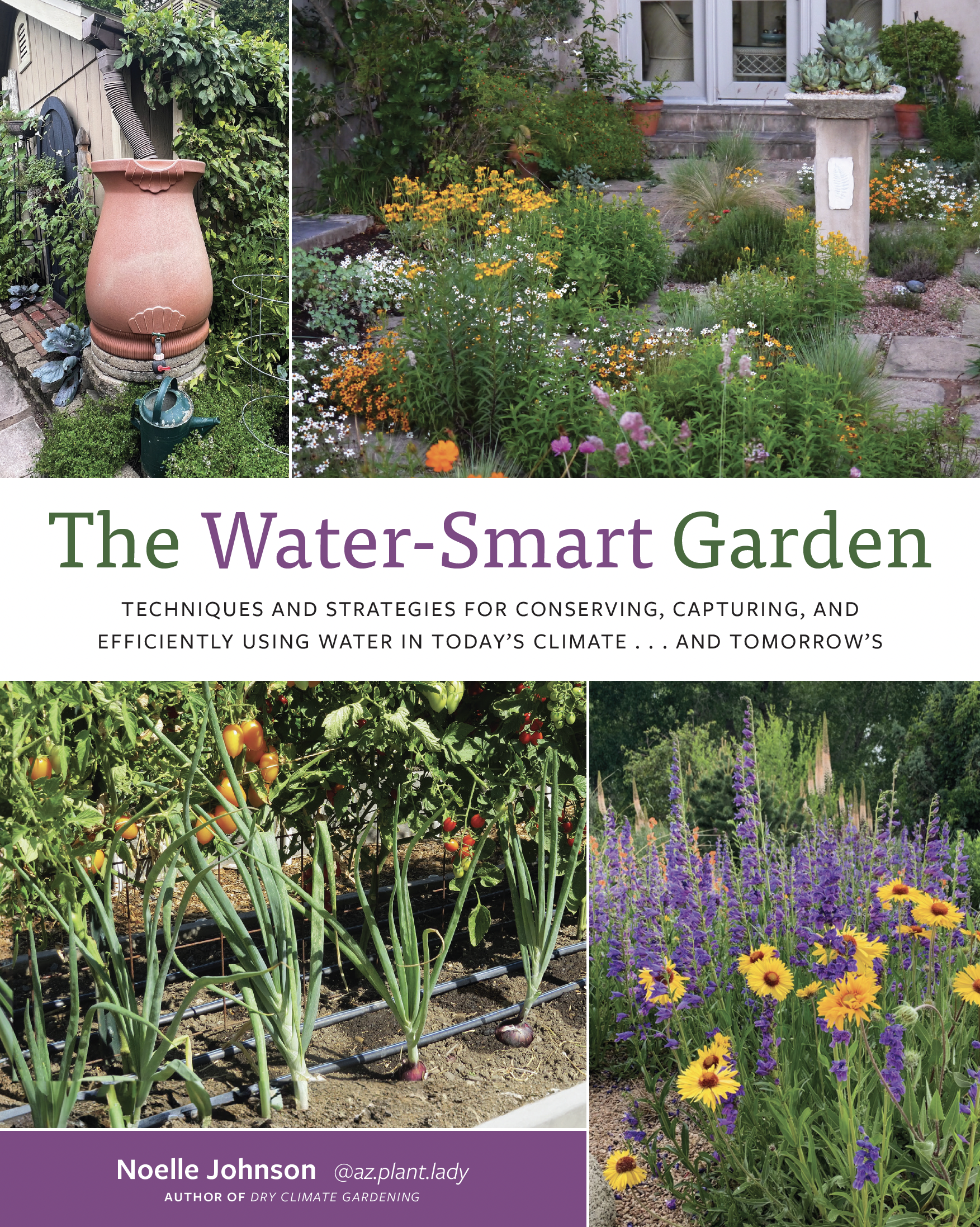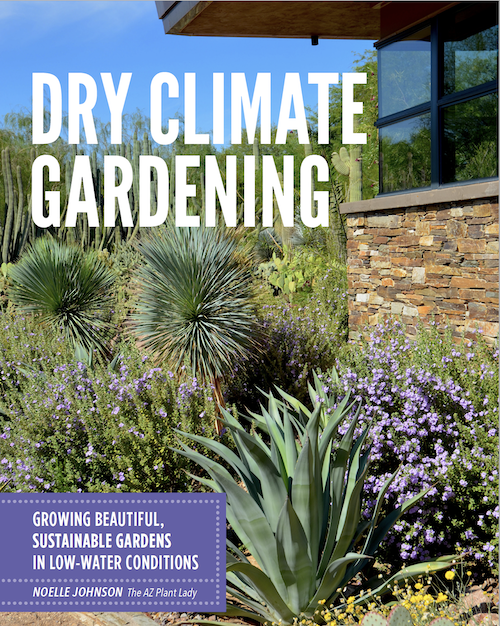A week ago, my husband and I took a stroll through our past, visiting the campus of Westmont College in Montecito, California, where we met 28 years ago.
What is special about this place is not only the memories, but the beautiful gardens that surround it.
Last week, I introduced you to the converted mansion, the courtyard with its iconic fountain, the ocean view from my dormitory window and a glimpse of a beautiful flower garden.
Today, I would like to show you the small chapel, hidden among the trees, a beautiful pond, an area burned by wildfire and a garden filled with bird-of-paradise.
This small chapel sits underneath the canopy of large oak trees.
I have always loved oak trees because I grew up in Southern California where the hills are dotted with with these magnificent trees.
The chapel was built in the 1960’s to honor the memory of the then college president’s daughter who died tragically in an auto accident while attending college here.
Students can often be found spending a few moments in prayer here and I did my share, while attending.
Regular chapel services aren’t held here, but they do host weddings at the chapel.
I just love the view of oak trees from the windows, don’t you?
As you walk away from the chapel, you are greeted by the sound of water.
I like the simplicity of the water fountain in the form of am earthen jug, which does not compete with the surrounding, lush plantings.
The Weeping Mulberry, while leafless in winter, adds a graceful, drooping element to the water.
Believe it or not, Weeping Mulberry is also grown in Arizona. There is a large one at my other alma mater, Arizona State University.
As we left the chapel and its pond, the path led into a truly beautiful garden…
This was the favorite part of the landscape surrounding the college.
Boxwood hedges enclosed rectangular areas of lawn that were surrounded by staggered plantings of Tropical Bird-of-Paradise (Strelitzia reginae).
The bright orange and blue color of this tropical plant are quite familiar to me. They are the official city flower of Los Angeles, California where I was born.
Tropical Bird-of-Paradise is native to South Africa, but thrives in warm climates all over the world. Sensitive to frost, it is hardy to zone 9 and does grow in the low desert, when protected from afternoon sun. However, it does not grow as well in desert locations as it does in milder areas such as Southern California.
Even unopened, I think that the flowers resemble birds.
It was somewhat surreal to be walking through a garden in full bloom at the end of December when most of the nation was blanketed in ice and snow.
Tropical Bird-of-Paradise bloom in winter and spring.
While I love this flower, I don’t grow them in my desert garden. The reason for this is that they can struggle in our extreme heat and cold winters. It is a rare occurrence when I see one that is thriving and blooming in our low-desert climate.
As we walked through the garden, we heard the sound of running water, but could not see where it was coming from.
So, we headed up the stairs toward the sound.
The sound led us to a narrow, stone-lined trench, filled with water.
As you can see, the fountain part is subtle and understated. Its main purpose is to lend the sound of water to the garden setting.
As we continued our journey, we came to an area that is still struggling to recover after a wildfire burned parts of the school grounds in 2008.
A lone oak tree is the only survivor in this large, formerly treed area.
As you can see, there used to be a lot of trees.
There were signs that construction was soon to take place, so it will be nice to see what they will do with this area.
Our walking tour was almost over and I admit that I was doing a bit of huffing and puffing while walking up and down the mountainside where our college is situated. It was much easier to walk up and down when I was a 19-year old student 😉
Before we leave, I’d like to show you where my husband and I met, by our old dormitory 28 years ago…
Our dormitory was divided into men and women’s sections. It was connected by a bridge and you would often find us taking turns walking over to visit the other…
Our stroll through memory lane was almost over and I was sad to go.
Years after I left Westmont College, I finished my degree in horticulture. As a new horticulturist, I was given the task of re-designing the landscape around a golf-course country club building.
There is a popular saying with young women at the school, “I went to Westmont and came away with my ‘MRS’ degree.”
While I did not get my bachelor’s degree from Westmont, I did meet my husband there and become ‘Mrs.’ Johnson.
Thank you for allowing me to share memories and the beauty of the gardens of this special place.








What Is a Sustainable Landscape?
azplantladyDo you know what ‘sustainable landscaping’ is?
Would you be able to identify a sustainable landscape if you saw one?
Last weekend, I spoke to a large group about “New Ideas for Sustainable Landscaping”. The community that I spoke to are in the process of becoming an Audubon International Sustainable Community, which would make them the first one to do so, west of the Mississippi.
There a lot of people who turned out to learn more about how to live a more sustainable lifestyle. I was thrilled to talk to them about what sustainable landscaping is and small steps that they can take toward that goal.
Maybe you are curious about sustainable landscaping and want to implement some strategies toward having a more sustainable landscape.
This is my first post talking about this important subject in the hopes that I can inspire you to take steps toward a more sustainable landscape.
WHAT IS A SUSTAINABLE LANDSCAPE?
First, let’s look at an example of what I am NOT talking about in regards to a sustainable landscape…
Do you remember when green gravel was in style in the 70’s?
Or how about this one with the fancy gravel design and two lonely cacti?
Technically speaking, both of these landscapes are sustainable, but they are not the model of sustainability we are looking for.
Here is a great example of a sustainable landscape.
So is this one.
Both of these landscapes are planted with arid-adapted plants that thrive in our hot, dry climate with minimal care. What you may also notice is that they are not ugly – they are all quite beautiful.
The next time you find yourself near the natural landscape, wherever you live – notice how nature does a great job creating and maintaining a beautiful landscape.
Nature does this without any help – no pruning, supplemental water, chemical fertilizers (nature does fine with natural sources of fertilizer) and pesticides.
So, what exactly is a ‘sustainable landscape’?
“A SUSTAINABLE LANDCAPE IS ONE THAT IS IN BALANCE WITH THE CLIMATE, WHICH REQUIRES MINIMAL ‘INPUTS’.”
What are ‘inputs’? They are resources that we use to create and maintain our landscapes such as fertilizer, supplemental water, pruning, gasoline and pesticides.
Would you like to decrease the amount of ‘inputs’ in your landscape, without having to sacrifice beauty?
Well you certainly can and it isn’t hard to do. In fact, you can save yourself time and money in the process!
Next time, we will discuss what we are doing wrong in our current landscapes, which is important to know so that we can avoid these mistakes on our quest toward more sustainable landscapes.
What Keeps a Landscape From Being Sustainable?
New Ideas for Sustainable Landscaping: A Preview…
Landscape DesignNew Ideas for Sustainable Landscaping
Have you ever given much thought about how sustainable your landscape is?
I must confess that I have been giving it a lot of thought lately.
I am busy putting the final touches on a presentation that I am giving tomorrow on “New Ideas for Sustainable Landscaping”.
The community where I am giving this talk, asked me to speak on this subject in their continuing efforts to become an Audubon International Sustainable Community.
There will be other experts on hand to discuss other ways that people and communities can become sustainable.
My talk will focus on three ways to create a more sustainable landscape:
– Maximize the use of arid-adapted plants.
– Utilize a good, functional design that is environmentally-friendly.
– Appropriate maintenance is practiced.
Next week, I will write a series of blog posts that will focus on these three ideas.
My hope is that you will be able to implement some of these things in your own landscape.
In the meantime, please wish me luck for my talk tomorrow!
A Harvest from Two Gardens…
Citrus, DIYThis past week, I was blessed with harvesting produce from two different gardens.
One was from one of my vegetable gardens…
Harvesting produce
About a 1/4 of my side vegetable garden is planted with cauliflower.
Over the weekend, I was able to harvest my first cauliflower of the season.
Now, I am aware that some of you may not care for cauliflower. Personally, I like it raw but NOT when it is cooked.
I’ll share with you a little secret that I have used to get my kids to eat cauliflower…
I cut the tops of the florets off, dice it and then sprinkle it on top of our dinner salads. It looks like grated cheese. I also slice carrots, celery and cucumbers to add to our salads, which not only add great flavor to salads – they are also a great way to get more vegetables into my kids 😉
The cauliflower was so delicious – it tasted like butter – seriously.
The next harvest was of another kind and from a different garden…
On the family farm, my mother has a large grapefruit tree.
Now, as anyone who has ever had a grapefruit tree can tell you – these trees are overly generous in the amount of fruit that they produce.
Luckily, my mother has 4 kids who are more then happy to help share with her bounty.
With my husband standing ready holding grocery bags, we picked some delicious fruit from the tree.
*While all the grapefruit looked ripe, some were not quite ready to be picked. If they did not come off fairly easily when lightly pulled/twisted, then we left them alone.
If I am going to be perfectly honest with you, I do not like to eat grapefruit – at all.
But, I have another purpose in mind for my newly picked grapefruit – I am going to make a natural cleaner from it using vinegar.
I promise to blog about it soon, so hold onto some of your excess grapefruit or maybe offer to take some off of your neighbor’s grapefruit tree 🙂
January Goodness From the Garden…
AZ Plant Lady, Recipes From the Vegetable Garden, Vegetable Gardening*This blog post contains affiliate links. If you click through and make a purchase, I may receive a commission (at no additional cost to you). Thanks for your support in this way.
When much of the nation is freezing their socks off, and their gardens are covered in a blanket of snow, I realize how much of a blessing it is to live in a climate where I can harvest vegetables from my garden in January.
My latest excursion out to the vegetable garden found Swiss chard, leaf lettuce, peas, spinach, broccoli, and carrots ready for picking.
Except for the broccoli (which I had other plans for), all of my freshly-picked veggies were going into our salad
One crop that I have really enjoyed growing this year, is Swiss chard. It grows so easily and I love its rainbow-colored stems.
Believe it or not, Swiss chard tastes delicious in salads.
My lettuce had a tough start this fall with caterpillars eating much of it until I brought out the big guns – BT Bacillus thurgiensis, which is an organic control for the caterpillars. It worked just great! I used Safer Brand 5163 Caterpillar Killer II Concentrate, 16 oz.
I won’t go into all the details of how it works, although it is quite interesting. For those of you who would like to learn more about BT, click here.
Here is a close-up of my salad. You can’t see the carrots too well, but they are there.
It was so refreshing and delicious, especially when dressed with my grandmother’s ‘Top Secret’ Salad Dressing‘.
I have recently revealed my grandmother’s secret recipe to my daughters, who now can make easily.
So, what is in store for my vegetable gardens this month?
I have planted another crop of radishes, carrots, leaf lettuce and spinach.
Next month, will be a busy month in the garden with getting ready to plant warm-season veggies.
I can hardly wait!
Purple, Prickly and Gorgeous!
Arizona, California, desert, Southwest gardenIf anyone asks me what is on my list of succulent favorites, Santa-rita prickly pear would be near the top.
Santa-rita prickly pear with new pads.
This beautiful prickly pear is also often referred to as ‘purple prickly pear’.
I love how the its gray/blue pads become gradually tinged with purple as the temperatures get cold.
To learn more about this particular prickly pear and why you’ll want to plant one in your garden, check out my latest article for Houzz.com…
Use the help of top home decorators to select matching bedside tables and a new lamp shade for your own bedroom design.
Find a wall shelf, customizable closet organization and stylish furnishings to whip your closet into shape.
I hope you enjoy my latest plant article for Houzz. I’ve been working on profiling plants that thrive in the desert southwest.
Stay tuned later this month for another great plant!
Drought-Tolerant Landscapes – Colorful or Boring?
Drought TolerantWhen you envision a drought-tolerant landscape, does a landscape covered in colored gravel with a cactus or two come to mind?
Believe it or not, this type of landscape style was popular back in the 70’s and some people have never moved beyond this outdated trend.
Well, let us fast-forward to present day when a drought-tolerant landscape can look like this…
I drove by this beautiful landscape, filled with succulents and other drought-tolerant plants on a recent trip to Santa Barbara, CA.
I love the magenta-colored brachts of the Bougainvillea, the green spiky Spanish Bayonet Yucca (Yucca Aloifolia) along with the gray/blue of Century Plant (Agave americana).
The orange flowers of Aloe arborescens are also a favorite of mine. I also like how the blue/gray leaves of the ‘Blue Chalk Sticks’ variety of Ice Plant (Senecio mandraliscae) provides a cool color contrast.
You may be surprised to discover that this beautiful, drought-tolerant landscape is part of an entry to a large estate and that there is another side filled with drought-tolerant plants.
On this side, you can see Trailing Rosemary (Rosmarinus officials ‘Prostratus’) spilling over the front with Tropical Bird-of-Paradise (Strelitzia reginae) right behind.
A low-growing pink Bougainvillea shows off its bright colors along with the spiky orange flowers of the Aloe nearby.
Look closely, and you can see the paddles of a Prickly Pear cactus (not sure what species) and the variegated spikes of Agave americana ‘Variegata’.
In this last view of this spectacular garden, we see a California Pepper tree (Schinus molle), which is quite familiar to Californians. (We had these trees lining our neighborhood street where I grew up in Southern California.) They are found in the low-desert areas of Arizona, but it is rare to see them.
In the background, you can see two very different types of palm trees. The large one is a Canary Island Date Palm (Phoenix canariensis) while the skinny one is a Mexican Fan Palm (Washingtonia mexicana).
If you look closely, you can see the flowering stalk of an agave as well as the upright columns of a Cereus cactus.
To the left of the mailbox, there is a Jade plant growing, a flowering Crown of Thorns (Euphorbia millii), which I also have growing in my garden.
So, if you think that having a drought-tolerant landscape means looking like this…
It doesn’t!
The majority of plants in the lovely garden in California, can be grown in desert climates.
So, which drought-tolerant landscape would you prefer – a colorful one or one that is boring?
Vegetable Gardens in Unexpected Places
Vegetable GardeningWhere do you expect to see vegetable gardens planted?
Most of the time, vegetable gardens are found in the backyard.
But, have you ever thought of locating your vegetable garden somewhere else?
This home in the Encanto district, in downtown Phoenix, has a great way of utilizing space in the front yard for growing vegetables.
The homeowners decided to utilize the space beside their driveway for planting a vegetable garden.
I think that this vegetable garden looks great in this area, don’t you think?
By the way, do know why the homeowner has planted flowers at the end of each vegetable row?
The marigolds and lavender not only add beauty to the garden, they serve an important role in keeping bad bugs away from the vegetables.
Pairing flowering plants and herbs with vegetables is a practice known as “companion gardening”.
There are many other plants that can be planted with vegetables to keep damaging insects away. You can read more about companion gardening here.
I also like how the homeowners added vegetables in front of the house. Some people would tend to plant annual flowers in this area instead, but think how much more fun it would be to plant vegetables there instead.
The vegetables look at home among the ornamental plants such as Agave angustifolia, Texas Mountain Laurel and Red Yucca.
A couple of years ago, I was driving home from a landscape consult and saw this home’s front yard filled with raised beds.
I returned a few months later to visit these vegetable gardens filled with zucchini, Swiss chard, tomatillos and carrots.
This is another home in east Phoenix that has homemade trellises, made from rebar and wire, with cucumber plants growing up on them.
The cucumbers are in the perfect spot where they receive afternoon shade from the large front yard tree.
Both of these gardens are planted and managed by the Farmyard group, who grow organic produce on urban farms in Phoenix and Scottsdale. You can find out more about this group and the services the offer here.
As cool as these vegetable gardens are, most of us cannot grow vegetables in our front yard due to HOA restrictions.
However, if you do not live in a neighborhood with an HOA, maybe you should think about including vegetables in your front yard?
You can start out small – maybe that area that you would normally plant flowers? ** A word of caution: don’t plant vegetables in front if you have problems with deer, rabbits or javelina.
I’d love to hear your thoughts about growing vegetables in the front yard…
First Harvest – 2 Years In The Making…
CitrusToday, was a very special day in the garden and it took almost 2 years to reach this date.
Today marks the first harvest from our young orange tree.
When planting trees, it is best to dig them 3x as wide as the rootball to allow roots an easier time to grow outward. However, plant at the same depth as the root ball.
Back in February of 2012, we bought our first citrus tree for our edible side garden.
Years ago in our first home in Phoenix, we had large, mature citrus trees. My two oldest daughters (then 9 and 4 years old) would climb up into our grapefruit tree. We also had orange and lemon trees on our flood irrigated lot near 48th Street and Thomas.
I’m not sure why it took us so long to plant an orange tree in our current home. But, our youngest kids loved picking oranges from their grandparent’s blood orange tree. So, shortly after the birth of our granddaughter, I decided it was time to plant one in our garden.
My youngest daughter and son were anxious to help plant their very own orange tree under the guidance of their older sister.
I explained to the kids that it would take a few years to see any fruit form on our new tree. So, we settled ourselves in for a long wait.
The first year, we did see orange blossoms form, but no fruit set. This is normal for a newly planted tree, so I wasn’t surprised.
Last fall, were thrilled to discover oranges forming on our tree.
I must admit that it was hard to be patient at this point. I couldn’t wait for them to start turning orange.
My husband kept asking me when it was time to pick the new oranges. I explained (more then once) that they had to come off easily when lightly pulled and twisted at the same time.
*Citrus does not continue to ripen and get sweeter after picked. So it is best to leave them on the tree until they are ready to be picked.
Some varieties of orange will have a little green color on their skin like Valencia oranges. However, Navel oranges should be mostly orange before picking.
Today, I decided was the day to pick our new oranges. My granddaughter was here and ready to help.
She needed a little help, but they did come off fairly easily.
While our harvest was quite small, I don’t think we will ever enjoy the taste of a fresh orange more then this one that took 2 years of waiting.
The variety of orange that we planted is called ‘Arizona Sweet’, which is great for both juice and eating in sections.
To make the most of our small harvest, I will make orange vinaigrette dressing for our salad tonight. But before I juice the oranges, I will take the orange zest and freeze it for later use, which is an easy way to extend your citrus harvest. I have done this before with lemons harvested from my mother’s large lemon tree. To learn how, click here.
Do you have citrus in your garden? What kind(s) do you grow?
A Garden Stroll Through Memory Lane
CaliforniaA week ago, my husband and I took a stroll through our past, visiting the campus of Westmont College in Montecito, California, where we met 28 years ago.
What is special about this place is not only the memories, but the beautiful gardens that surround it.
Last week, I introduced you to the converted mansion, the courtyard with its iconic fountain, the ocean view from my dormitory window and a glimpse of a beautiful flower garden.
Today, I would like to show you the small chapel, hidden among the trees, a beautiful pond, an area burned by wildfire and a garden filled with bird-of-paradise.
This small chapel sits underneath the canopy of large oak trees.
I have always loved oak trees because I grew up in Southern California where the hills are dotted with with these magnificent trees.
The chapel was built in the 1960’s to honor the memory of the then college president’s daughter who died tragically in an auto accident while attending college here.
Students can often be found spending a few moments in prayer here and I did my share, while attending.
Regular chapel services aren’t held here, but they do host weddings at the chapel.
I just love the view of oak trees from the windows, don’t you?
As you walk away from the chapel, you are greeted by the sound of water.
I like the simplicity of the water fountain in the form of am earthen jug, which does not compete with the surrounding, lush plantings.
The Weeping Mulberry, while leafless in winter, adds a graceful, drooping element to the water.
Believe it or not, Weeping Mulberry is also grown in Arizona. There is a large one at my other alma mater, Arizona State University.
As we left the chapel and its pond, the path led into a truly beautiful garden…
This was the favorite part of the landscape surrounding the college.
Boxwood hedges enclosed rectangular areas of lawn that were surrounded by staggered plantings of Tropical Bird-of-Paradise (Strelitzia reginae).
The bright orange and blue color of this tropical plant are quite familiar to me. They are the official city flower of Los Angeles, California where I was born.
Tropical Bird-of-Paradise is native to South Africa, but thrives in warm climates all over the world. Sensitive to frost, it is hardy to zone 9 and does grow in the low desert, when protected from afternoon sun. However, it does not grow as well in desert locations as it does in milder areas such as Southern California.
Even unopened, I think that the flowers resemble birds.
It was somewhat surreal to be walking through a garden in full bloom at the end of December when most of the nation was blanketed in ice and snow.
Tropical Bird-of-Paradise bloom in winter and spring.
While I love this flower, I don’t grow them in my desert garden. The reason for this is that they can struggle in our extreme heat and cold winters. It is a rare occurrence when I see one that is thriving and blooming in our low-desert climate.
As we walked through the garden, we heard the sound of running water, but could not see where it was coming from.
So, we headed up the stairs toward the sound.
The sound led us to a narrow, stone-lined trench, filled with water.
As you can see, the fountain part is subtle and understated. Its main purpose is to lend the sound of water to the garden setting.
As we continued our journey, we came to an area that is still struggling to recover after a wildfire burned parts of the school grounds in 2008.
A lone oak tree is the only survivor in this large, formerly treed area.
As you can see, there used to be a lot of trees.
There were signs that construction was soon to take place, so it will be nice to see what they will do with this area.
Our walking tour was almost over and I admit that I was doing a bit of huffing and puffing while walking up and down the mountainside where our college is situated. It was much easier to walk up and down when I was a 19-year old student 😉
Before we leave, I’d like to show you where my husband and I met, by our old dormitory 28 years ago…
Our dormitory was divided into men and women’s sections. It was connected by a bridge and you would often find us taking turns walking over to visit the other…
Our stroll through memory lane was almost over and I was sad to go.
Years after I left Westmont College, I finished my degree in horticulture. As a new horticulturist, I was given the task of re-designing the landscape around a golf-course country club building.
There is a popular saying with young women at the school, “I went to Westmont and came away with my ‘MRS’ degree.”
While I did not get my bachelor’s degree from Westmont, I did meet my husband there and become ‘Mrs.’ Johnson.
Thank you for allowing me to share memories and the beauty of the gardens of this special place.
A Visit to the Past and Through Beautiful Gardens…
CaliforniaLast weekend, our family loaded our suitcases into the car and headed out to Southern California to visit my second-oldest daughter, Rachele, who is stationed there at a Navy base.
I was excited to see Rachele, but also to visit that part of California since it is near where I grew up and also where I met my husband while attending college.
On Saturday morning, we left our younger kids with Rachele and ventured up into the hills outside of Santa Barbara in order to visit our college.
Westmont College is located on side of the mountains in the small town of Montecito.
Most people haven’t heard of Westmont. It is a small Christian, liberal arts college with an enrollment of 1,200.
The college is set among beautiful gardens that echo the Spanish/Mediterranean style.
Believe it or not, I was not interested in the gardens or plants when I attended Westmont. I was more focused on having fun, dating and passing my classes. At the time, I was decidedly “undecided” in what I wanted to major in.
I spent 2 years at Westmont before I got married and moved to Arizona.
Now, whenever I am visiting Santa Barbara, I like to take time to visit the beautiful gardens of my former alma mater.
I’d love to take you on a little tour of my favorite spots and share some memories…
This is the main administration building, which used to be the mansion that stood on this estate.
This is where my husband and I met. We both had part-time jobs in adjoining offices and I thought he was awfully cute and nice.
My favorite part of the building was the courtyard outside with its fountain.
I love the detail of the water fountain.
Years ago, I posed for this photo with my friend, Mary by the same fountain.
I love the look of stone finials, don’t you?
It may have been the end of December, but there were still blooms to be seen like this pink azalea and the hibiscus, below…
I couldn’t help but think of those whose gardens are frozen and/or covered in snow right now. The Mediterranean climate is truly wonderful – this area rarely experiences temps below freezing.
An old bougainvillea grew up among the stair railing.
I can only imagine how old this bougainvillea is.
I love garden gates, don’t you?
Especially when you notice the detail.
While the converted mansion and its surroundings were beautiful, the college has its share of plain, boring dormitories.
This was my freshmen dorm where I lived on the third floor. The dormitory looked much the same as when I attended except that there were video cameras and electronic door locks with card readers.
While the dorm wasn’t too impressive, the view from my room was…
I could see the ocean and the Channel Islands from my window.
Up above the dorm, on the mountainside was an old tea garden that was part of a large estate. Students would climb up and explore the ruins.
As we left the dorm, we walked along the path lined with Simplicity roses toward a building where I must admit that I did NOT spend much time…
This is the large boulder located by the library. Students could be found sitting on top studying or catching some rays.
There was a Chaparral Sage (Salvia clevelandii) flowering next to the boulder. This shrub can be grown in the desert, if given some afternoon shade.
I hope you have enjoyed the tour so far.
Next time, I will show you the small chapel nestled within the trees, a small pond, a stunning garden filled with flowers and the area that was burned in a large wildfire a couple of years ago.